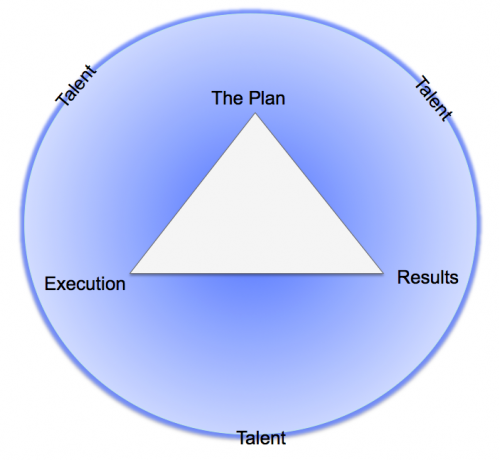A client and I were talking about 2013 the other day. He told me he his growth strategy for 2013 was going to be through improved sales productivity. His thought process made sense, considering this year we spent a lot of time growing headcount. He is headed into the last part of a wildly successful year of 165% bookings growth.
Looking into 2013 my client sees tremendous opportunity to grow through productivity. In other words, he thinks he can get his existing team selling more. Considering how new the majority of the team is, I think he’s right. There is a lot of room to grow. But, how much room?
We started talking about how much he could grow and his maximum productivity. I asked what he felt maximum productivity was and how much growth could that could provide.
To get to the answer, we did the following.
We identified the key sales metrics he felt represented sales productivity. In his case, it was average deal size, number of deals sold in a year and number of sales reps. We then took those metrics and made some assumptions on what we believed were realistic expectations. We then did the math. We subtracted this “optimized” number from the 2012 numbers and found the growth rate for 2013.
I know that was tough to follow, so I’ll try to make it easier.
(X=average deal size) x (Y=average number of deals a rep can close in a year) x (the total number of reps) = MP Maximum Productivity
(MP=Maximum productivity) – (CP=current productivity) = P=Productivity growth potential
Once we have this number, the question then becomes, is it enough growth? If yes, proceed. If no expect to hire more people at sometime, or evaluate the underlying average deal size assumptions, number of deal assumptions etc.
This is a simple model. It can certainly be come more complicated. However, I try to keep things as simple as possible.
This model will tell you a few things:
- What your maximum growth ceiling is. In other words, how much growth/revenue can you get out of your existing team
- When you need to hire more sales people
- If your optimizing your sales resources
- The strength of sales leadership
- How much money you “may” be leaving on the table
To download a simple sales team productivity calculator click here; Sales Team Productivity Calculator
————–
Footnote: I’ve intentionally kept it simple for this blog post. There are some additional complexities to be aware of. For example, new sales people must be factored in. New sales people will not be as productive therefore that must be accounted of in the model. Underlying assumptions must be data driven. If not, it can have an adverse effect on the outcome.



